Everything you need to know about cooking with spinach, including the different spinach varieties, how to store it, and nutrition information.
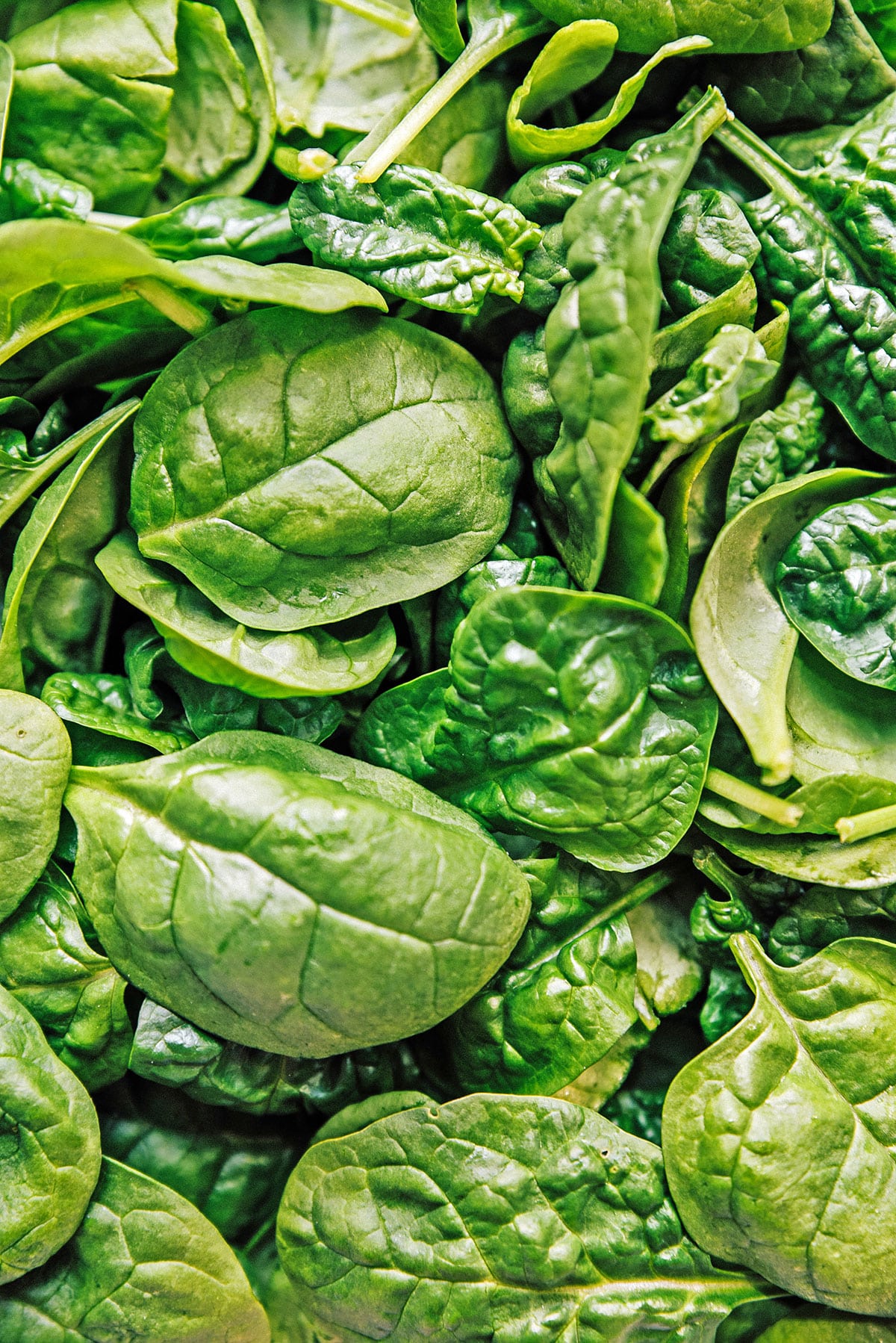
It’s time for another spotlight ingredient, and this time we’re making Popeye the Sailor Man proud!
Spinach is a cool weather leafy green that I use in almost any instance where I would use lettuce, kale, or arugula. It’s loaded with iron and many other nutrients, so I’ll take just about any chance I get to throw it into a green smoothie or salad (I even feed spinach to my dog!). Here’s a quick run through of everything you need to know about it before we jump into the leafy green recipes later this week!
- How To Choose Spinach
- Types Of Spinach
- How To Store Spinach
- Our Favorite Spinach Recipes
- Spinach Nutrition
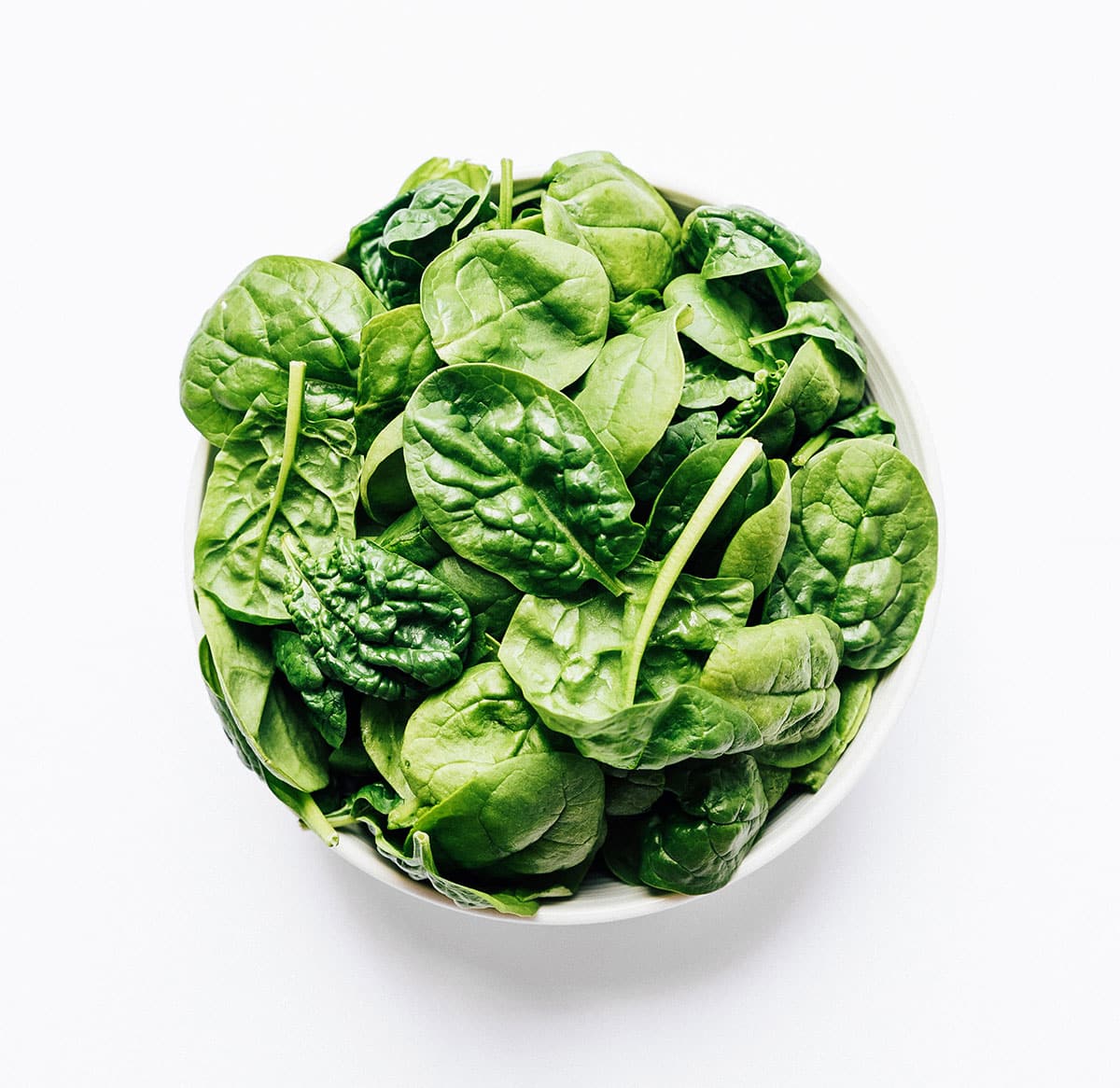
How To Choose Spinach
Spinach is in season from spring to fall. Look for deep green leaves that are free from blemishes and have relatively thin stems (thick stems usually mean more bitter leaves).
Types Of Spinach
There are many types of spinach, but the most common varieties are:
- Savoy Spinach: Dark green, crinkly leaves with a springy feel
- Baby Spinach: A smaller variety of savoy, this variety is tender and more sweet
- Smooth or Flat Leaf Spinach: Broad, flat leaves, make it especially suited for commercial canning and freezing
- Red Leaf Spinach: Deep green color with maroon veins and an earthier flavor
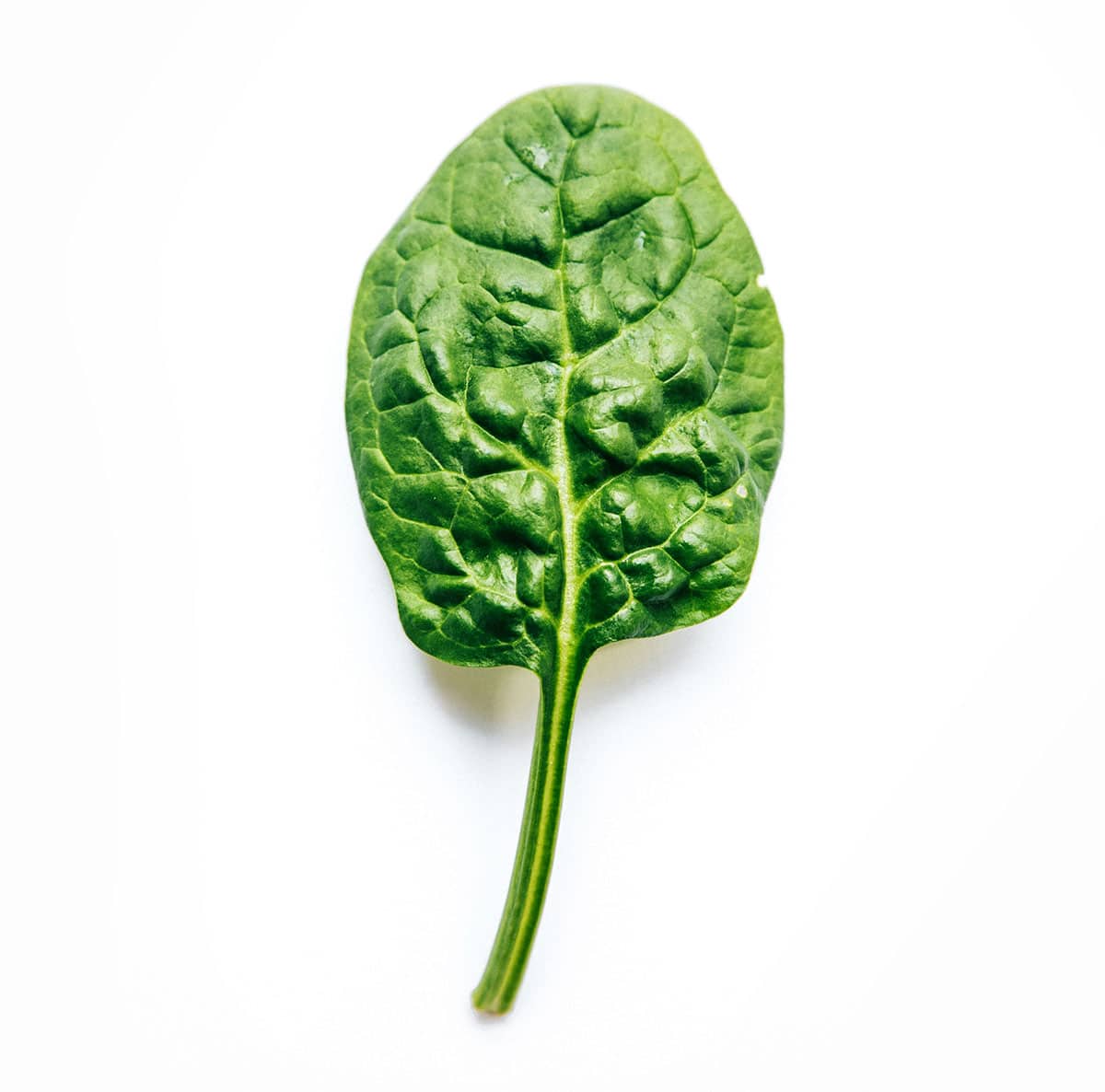
How To Store Spinach
Store unwashed spinach for 3 to 4 days in a bag lined with a paper towel or tea towel. Excess moisture will cause it to spoil faster.
Store bags of spinach (the pre-washed kind) until the date listed on bag (special preparation means these can be kept for longer)
Freeze spinach by blanching. To blanch, wash the leaves, then place in a boiling pot of water for about 30 seconds, or until leaves are bright green. Immediately scoop out spinach and place in an ice bath. From here, you can freeze the spinach for up to a year (grab our full guide to freezing spinach here 👈)
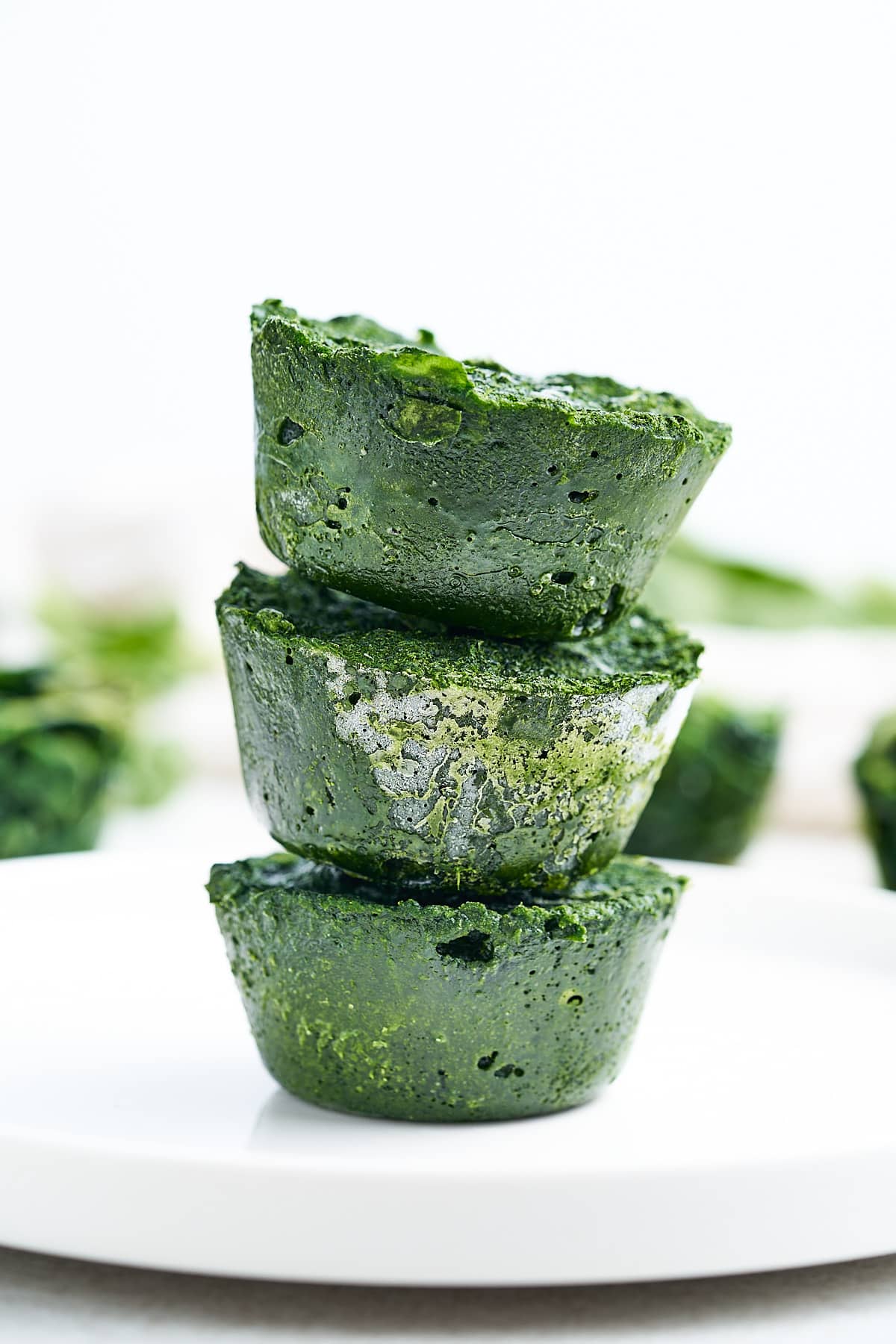
Our Favorite Spinach Recipes
We have dozens of spinach recipes on our site, but here are a few of our favorites!
- Leafy Greens Pesto with Spinach
- How to Make Green Smoothes (for Beginners)
- Greek Spanakopita Triangles
- Spinach and Mashed Potato Croquettes
- Sweet Potato Spinach Breakfast Skillet
- Hidden Spinach Guacamole
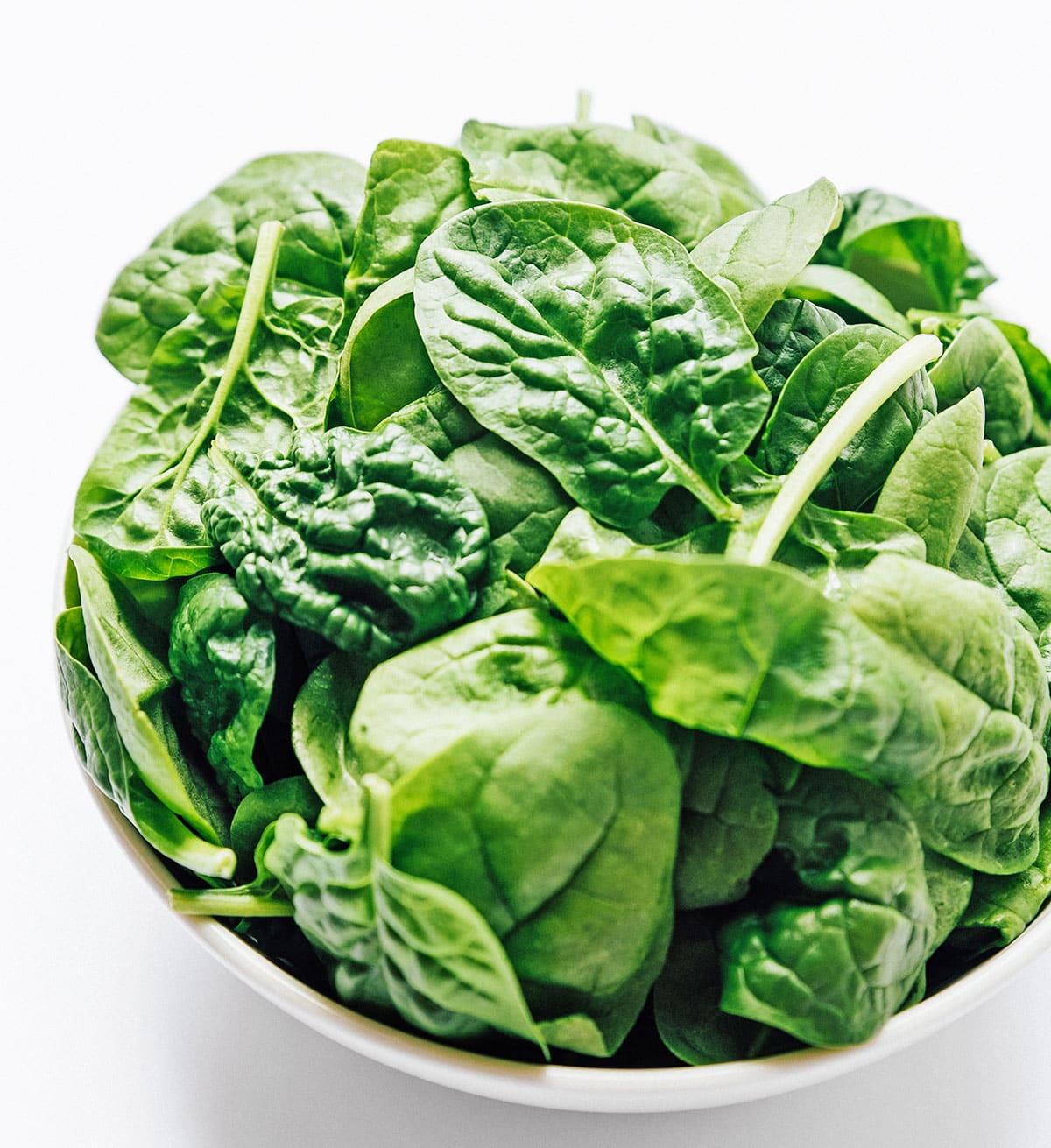
Spinach Nutrition
Spinach is packed with nutritional benefits (even dogs should eat spinach!) This info is per 100 g (about 3 cups fresh spinach).
Calories: 23
Spinach is a low calorie vegetable, with just 23 calories in 3 cups.
Carbohydrates: 3.6 g
Spinach is also low in carbs, as far as vegetables go! It’s a great choice for keto and low carb diets.
Fiber: 2.2 g
With 8% of your daily needs for fibers, spinach is a good choice for adding a bit of fiber into your diet.
Protein: 3 g
As with most vegetables, spinach is not particularly high in protein.
Fat: 0 g
As with most vegetables, spinach is fat-free.
360% Daily Value of Vitamin K
Spinach is an excellent source of Vitamin K, a fat-soluble vitamin that helps maintain healthy blood clotting and bone synthesis.
187% Daily Value of Vitamin A
Spinach is also an excellent source of Vitamin A, which is essential in many components of healthy vision, as well as immunity!
46% Daily Value of Vitamin C
3 cups of spinach contain almost half of the vitamin C that you need in a day! This antioxidant helps maintain your immune system as well as helps to create collagen.
45% Daily Value of Folate (Vitamin B9
Spinach is rich in folate, which is a water-soluble vitamin that helps make DNA & RNA.
15% Daily Value of Iron
For a vegetarian diet, any plant source with this much iron is a huge win! Spinach is high in iron, which is a major component of hemoglobin, the protein that makes up red blood cells and carry oxygen around the body.
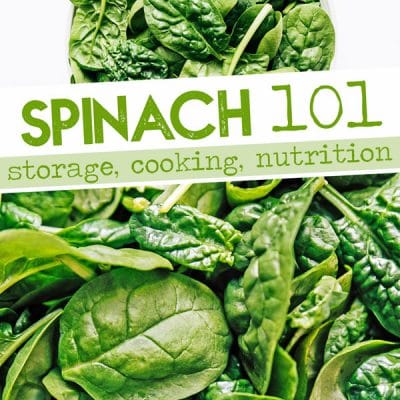
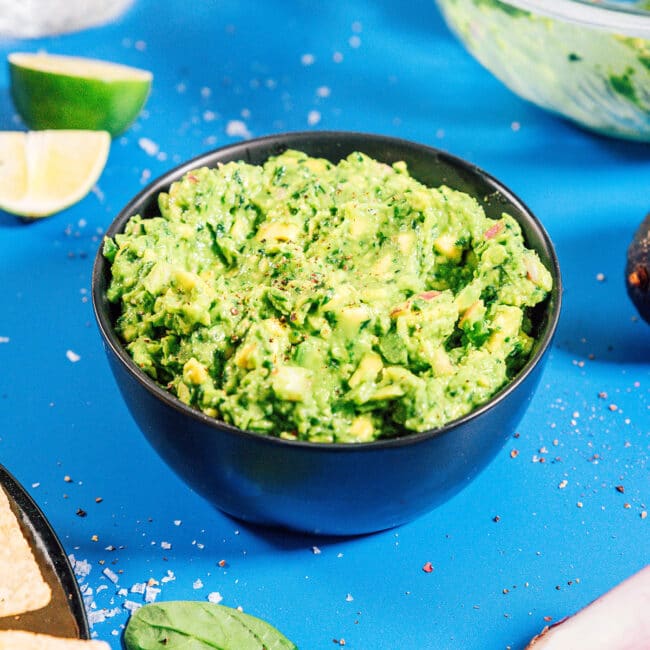
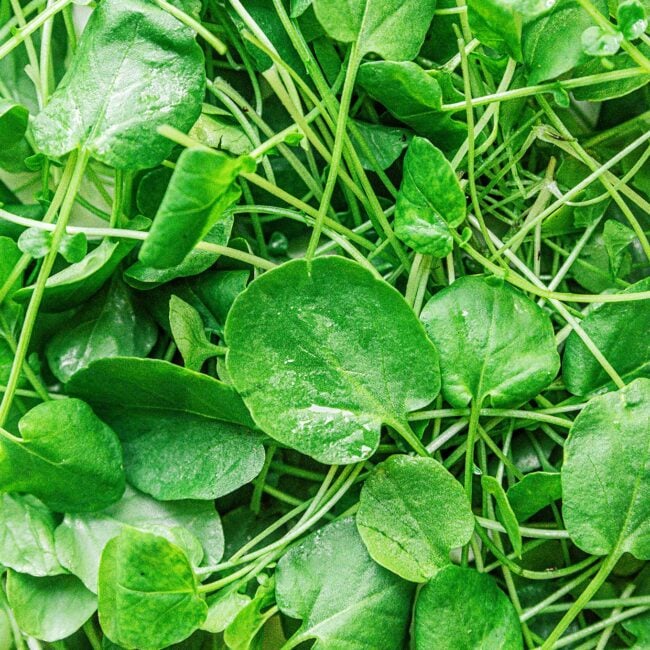
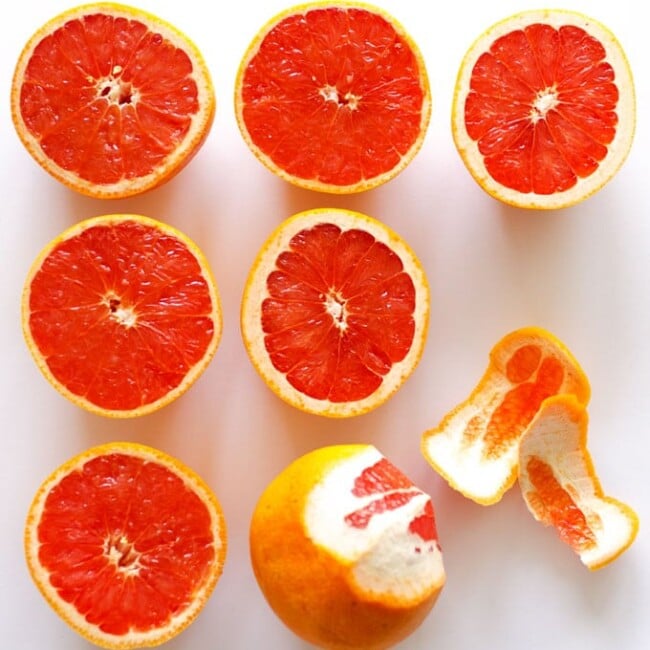
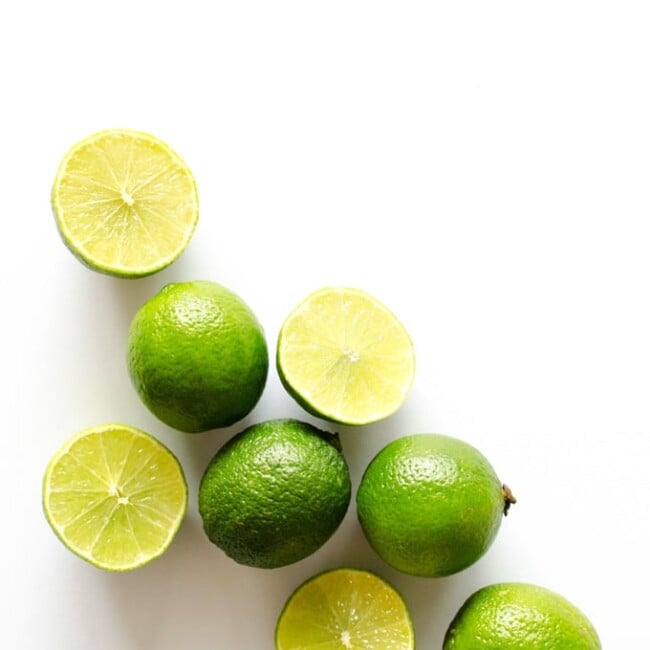
Rainer says
I read that raw spinach contains oxalates and should always be cooked.
Sarah Bond says
In moderation the oxalates shouldn’t be a problem, but you can cook it if you’re worried about it! 😀